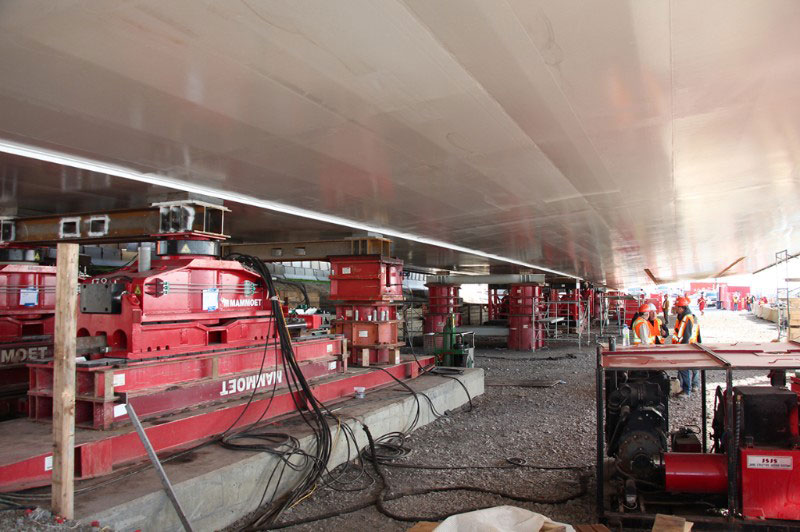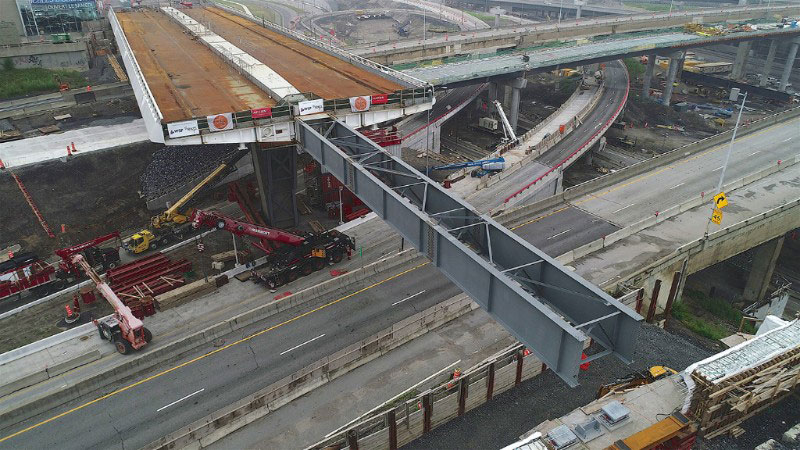Mammoet uses new method of skidding to launch bridge in congested site
Mammoet, a subcontractor of Demathieu Bard – Aecon, has safely completed the launch of the St. Jacques Bridge in Montreal, Canada. The team used a new method of skidding to overcome site congestion and minimize disruption to traffic. The ministère des Transports, de la Mobilité durable et de l’Électrification des transports (MTMDET) specified a new method to install the bridge across a two lane highway interchange, reconnecting east and west St. Jacques Street. In order to limit the obstacles to the road network, MTMDET required the deck of the Saint-Jacques Bridge to be built on a bank on the side of the highway and then launched across the highway. This was in order to minimize traffic disturbances below. Mammoet and Demathieu Bard – Aecon created an innovative approach which adapted their existing method of skidding to fulfil MTMDET’s requirements for the installation method.

The bridge was launched in two phases. In the first phase, one half of the bridge was jacked up and placed on a system of eight skid shoes and temporary supports. The system pushed the structure forward from the east side of St. Jacques Street using four steps. Vertical jacks lifted the bridge clear of the temporary supports and the skid shoes pushed it forward 0.6 meters. The jacks then lowered the bridge back onto the supports as the skid shoes retracted 0.6 meters to their starting point. Step by step the system repeated the sequence until the bridge was pushed out over a 45-meter distance. At this point the middle pier between the highways was able to support the structure at two points. The remaining half of the bridge was then constructed on the east side and attached to the first section.

The new skidding method enabled the client to launch the fabricated bridge within the congested site. As a result, the disruption to traffic was minimized to only two weekends and a few nights.

Follow us on social media: